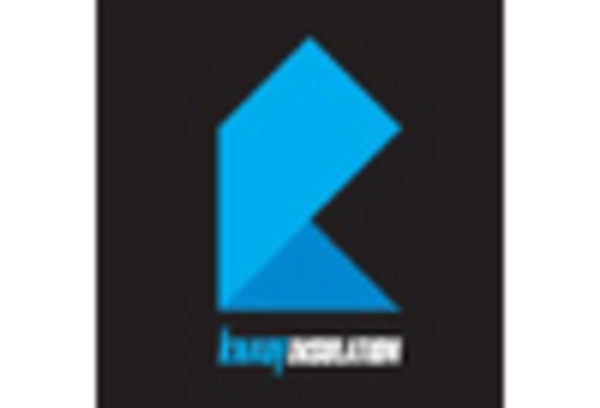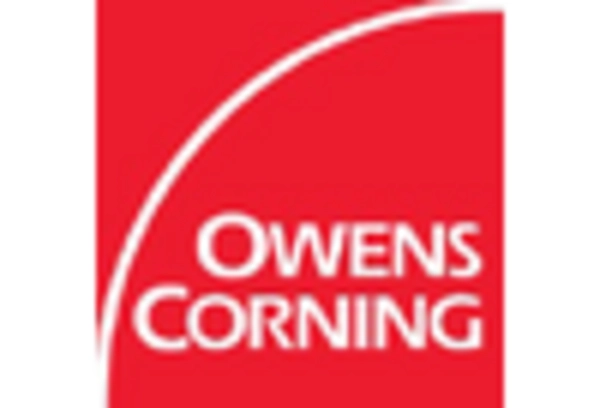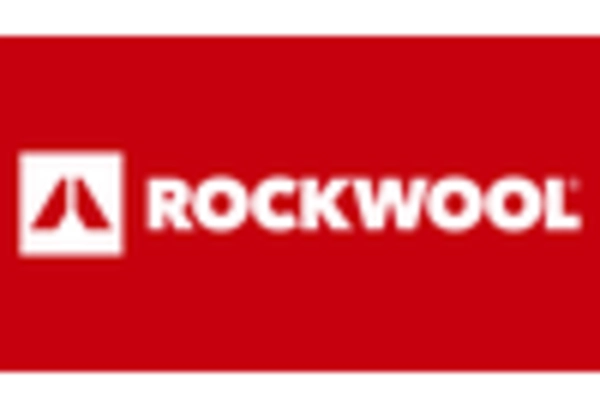Rising Energy Costs
The building insulation-material market is experiencing a notable surge in demand due to escalating energy costs across the GCC region. As energy prices continue to rise, property owners and developers are increasingly recognizing the importance of effective insulation in reducing energy consumption. Insulation materials play a crucial role in maintaining indoor temperatures, thereby minimizing reliance on heating and cooling systems. This trend is particularly pronounced in countries like Saudi Arabia and the UAE, where extreme temperatures necessitate efficient energy use. The market is projected to grow at a CAGR of approximately 6% over the next five years, driven by the need for energy-efficient solutions in residential and commercial buildings.
Growing Awareness of Environmental Impact
There is a growing awareness among consumers and businesses regarding the environmental impact of construction practices, which is positively affecting the building insulation-material market. As sustainability becomes a priority, stakeholders are increasingly seeking materials that not only provide thermal efficiency but also have a lower carbon footprint. This shift in consumer preference is prompting manufacturers to innovate and offer eco-friendly insulation solutions. The market is expected to witness a rise in demand for materials such as recycled and bio-based insulation, which align with the GCC's vision for sustainable development. This trend could potentially lead to a market growth rate of around 5% annually.
Urbanization and Infrastructure Development
Rapid urbanization and infrastructure development in the GCC region are driving the building insulation-material market. As cities expand and new construction projects emerge, the demand for effective insulation solutions is becoming more pronounced. The construction of high-rise buildings, commercial complexes, and residential units necessitates the use of quality insulation materials to ensure energy efficiency and comfort. According to recent data, the construction sector in the GCC is projected to grow by 4.5% annually, further fueling the demand for insulation products. This trend indicates a robust market environment for insulation manufacturers and suppliers.
Government Initiatives for Energy Efficiency
Government initiatives aimed at promoting energy efficiency are significantly influencing the building insulation-material market. Various GCC governments are implementing policies and regulations that encourage the use of energy-efficient materials in construction. For instance, the UAE's Energy Strategy 2050 aims to increase energy efficiency by 40%, which directly impacts the demand for insulation materials. These initiatives often include financial incentives, grants, and subsidies for projects that incorporate sustainable building practices. As a result, the market is likely to see a steady increase in the adoption of advanced insulation technologies, which are essential for meeting these regulatory requirements.
Technological Innovations in Insulation Materials
Technological innovations are reshaping the building insulation-material market, leading to the development of advanced products that offer superior performance. Innovations such as aerogel insulation, vacuum insulation panels, and phase change materials are gaining traction due to their exceptional thermal properties. These technologies not only enhance energy efficiency but also contribute to space-saving solutions in construction. As the GCC region continues to invest in modern building techniques, the demand for these innovative insulation materials is expected to rise. The market could potentially see a growth rate of 7% as builders and architects increasingly opt for cutting-edge insulation solutions.

















Leave a Comment